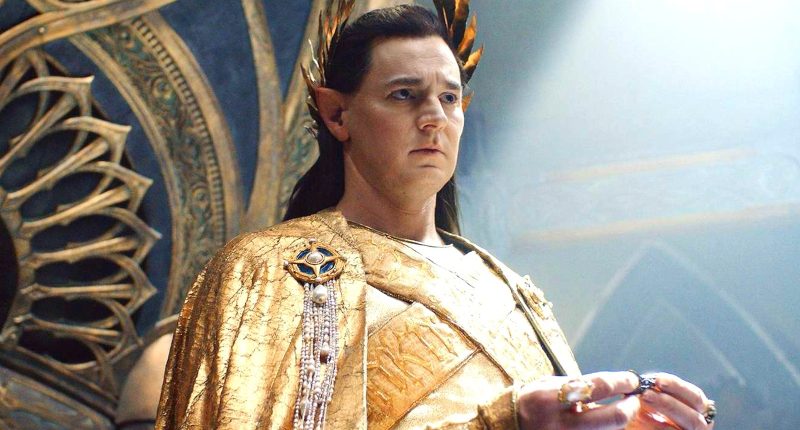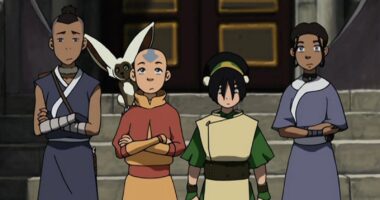Share this @internewscast.com
J.R.R. Tolkien wrote about Wizards and Valar, but when the word “immortal” is mentioned, one race stands out prominently: the pointy-eared, long-haired, light-footed First Born children of Ilúvatar known as Elves. They are the quintessential “immortal” beings in Tolkien’s universe. Whether you’re considering young ones like Legolas and Arwen, middle-aged characters like Elrond, or ancients such as Galadriel and Celeborn, most Elves are so aged that their years blend together. But do they truly live forever?
The answer is yes — you might even describe them as immortal, and Tolkien does use that term. However, this isn’t immortality in the usual sense. There is a structured timeline regarding how long Elves live, and it’s not an endless, eternal duration. Instead, it’s a remarkably grounded one, which is why we use quotes around “immortal.” No, Elves don’t age like Humans, but there is a specific lifecycle and a mysterious eventual end, both of which we’ll explore shortly.
This is why “immortal” can be a misleading term. Merriam-Webster defines “immortal” as “exempt from death” or “exempt from oblivion.” This isn’t accurate for Elves. Or at least it remains unclear. Their existence is tied to the world (or “Arda”) where they reside. This means they continue to live alongside Arda, but when that celestial body ceases to exist, what happens to the Elves remains a mystery. In a letter from 1958, Tolkien referenced the term “limitless serial longevity.” He was addressing the Human desire to hold onto life, but the phrase is applicable to Elvish immortality as well. Elves exist perpetually, yet as far as we know, that may only remain true until the setting they exist within vanishes.
The Gift of Death in Middle-earth
In “The Silmarillion,” it says, “Immortal were the Elves, and their Wisdom waxed from age to age, and no sickness nor pestilence brought death to them.” Tolkien also wrote about the theme of Death in the 1958 letter mentioned above. In fact, the Oxford author often positioned death as a bittersweet positive throughout his fantasy writing. He pointed out that Death is not an Enemy, but “the Gift of God (to Men).” Humans are allowed to grow old, die, and their spirits move on to an unknown afterlife.
Elves don’t get that privilege. Instead, they grow old with Arda. In the book “Morgoth’s Ring,” Tolkien even says, “For the Eldar do indeed grow older, even if slowly: the limit of their lives is the life of Arda, which though long beyond the reckoning of Men is not endless, and ages also.”
To put it another way, Elves go on living within the boundaries of the physical Earth. In another letter from 1951, Tolkien combined these concepts by using the phrase “immortality (within the world).” He also described Elvish earthbound serial longevity thusly: “The doom of the Elves is to be immortal, to love the beauty of the world, to bring it to full flower with their gifts of delicacy and perfection, to last while it lasts, never leaving it even when ‘slain’, but returning.”
So, while Elves don’t get sick or age, they live “forever” within the limit of the existence of physical, time-bound creation. Even when their bodies are killed, their spirits remain on earth in an Elvish afterlife in the Undying Lands in the West, outside of Middle-earth. In that hallowed realm, they dwell in a sort of heavenly holding area called the Halls of Mandos. At times, they are even given new bodies and return to the lands of the nearby living.
Elvish death and life cycles
This also leads to an obvious exception to the “living forever” part of Elvish existence. If you’ve watched “The Lord of the Rings” or “The Hobbit,” it’s abundantly clear that Elves are not bulletproof. They can die in battle. Weapons, violence, and accidents can hurt them. There are moments when Elves even die of grief, shuffling off their immortal coils and heading to the Halls of Mandos to live perpetually as earth-bound spirits.
Along with this partial “dying,” Elves age through a life cycle. While not clearly defined, if you read enough of Tolkien’s notes, this roughly maps out into three stages, starting with birth. According to “Morgoth’s Ring,” Elves learn to talk, walk, and dance by one year old, but it takes them a full 50 to 100 years to reach adulthood. From there, the second, really long cycle of adulthood begins. They get married, have families, do great deeds — all that good stuff. The third cycle or stage of life is only for really old Elves who haven’t been killed over the course of the millennia. The book adds, “As the weight of the years, with all their changes of desire and thought, gathers upon the spirit of the Eldar, so do the impulses and moods of their bodies change.” Given enough time, Elvish physical bodies “wear out.” They fade. This is also the rare time when a very physically mature Elf can actually grow a beard — like Círdan in “The Rings of Power.”
Which elves are really old?
Okay, so if you can’t get a specific date on how long immortal Elves live, what does a truly old Elf look like? There are a few examples, one of which we already brought up. Círdan, the bearded Elf played by Ben Daniels in “The Rings of Power,” manages the ships that sail across the sea to Valinor (the Middle-earth one, not the one on Mars). When he finally wraps up shop and heads over the sea himself after “The Lord of the Rings,” he’s a robust 11,000 years old and counting.
Another example of a very old Elf is Galadriel, who is born early in “The Silmarillion.” Over the millennia that follow, she stays busy. Eventually, she too feels tired, faded, and drawn to rest in the West. When she boards the ship with Frodo at the end of “The Return of the King,” she’s well over 8,300 years old.
The last example we’ll use here is Glorfindel, the Elf from “The Fellowship of the Ring” book, who was infamously cut and replaced by Arwen in Peter Jackson’s movies. While we don’t have specifics on Glorfindel’s age, he is the textbook case for an old Elf in a reincarnated body. Glorfindel is already ancient when he is killed by a Balrog in “The Silmarillion.” This happens in the First Age, thousands of years before “The Lord of the Rings.” He spends time in the Halls of Mandos before returning to Middle-earth as a spiritually overpowered Elvish warlord during the Second Age. By the Third Age (when “The Lord of the Rings” takes place), his new body is already thousands of years old. He’s still heavily involved in historical events and even saves Frodo from the Black Riders.
Elvish lifespans in The Lord of the Rings are a mystery
So there you have it. All of this is a very long way around stating the obvious: Elves are, indeed, immortal beings without clear death dates. They keep on living, seemingly forever. As with all things Tolkien, though, there is a confusing and vague element to Elvish immortality that makes it hard to pin down exactly how long “forever” is. You can’t put a number on their lifespans, but at the same time, you can’t just say they’ll “never die.”
Elves like Círdan and Galadriel are thousands of years old, but there are other Elves more ancient than those three. Even when they do die, their spirits don’t leave the earth. They go on living as spirits and can even return in new bodies.
At the same time, Elves do progress through a life cycle. They are born and grow old. But that process doesn’t end with their bodies dying. They don’t get sick. They don’t give up the ghost and go into the ground. Instead, they continue on as faded spirits, tied to Arda and its fate. So, if you’re really asking how long Elves live, the best answer would be as long as Arda itself — and that, friends, is a timeline for which Tolkien never gave us a date.






